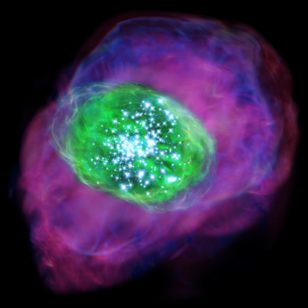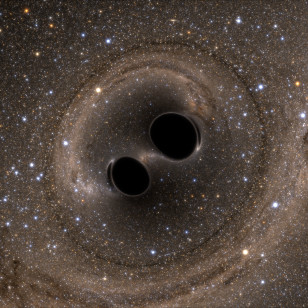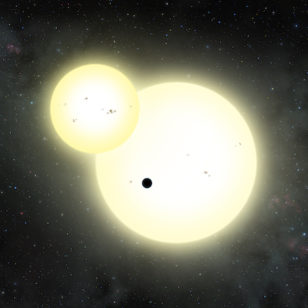Astronomers Find Really Really Old Oxygen in Distant Galaxy
Astronomers say they have spotted some of the oldest oxygen in the universe.
Using the European Southern Observatory’s ALMA or Atacama Large Millimeter/submillimeter Array of radio telescopes, the scientists say they’ve picked up a strong signal that indicates oxygen in a galaxy about 13.1 billion light-years away.
This means that the oxygen formed no later than about 700 million years after the Big Bang, what is said to have marked the beginning of our universe.
The scientists found the ancient oxygen in the distant galaxy as SXDF-NB1006-2, in the constellation Cetus.
They say their findings provide new insight into the early universe and how its earliest stars were formed.
Keep in mind that immediately after the big bang the only elements in the universe were hydrogen, helium and lithium. Elements any heavier than those, including oxygen, weren’t formed until after stars had formed.
Teach Kids Music and Their Brains Could Develop Faster
California scientists are finding that teaching music to young children can speed up their brain development, especially the areas of the brain that are responsible for processing sound, language development, speech perception and reading skills.
Researchers from the Brain and Creativity Institute at the University Of Southern California have been monitoring the brain development and behavior of thirty-seven children living in underprivileged areas of Los Angeles.
Thirteen of the children receive music instruction from a program sponsored by the Los Angeles Philharmonic. Eleven children are involved in a community soccer program while the remaining thirteen children, in the group, aren’t involved in any particular after-school activities.
Initial study results published in the journal, Developmental Cognitive Neuroscience, shows that the auditory pathway in the brains of children involved with music education is maturing quicker and is more efficient than those who don’t participate in the musical program.
Scientists Detect 2nd Gravitational Wave
Researchers from the LIGO and Virgo Scientific Collaborations say that they’ve received a second gravitational wave signal with LIGO’s (Laser Interferometer Gravitational Wave Observatory detector sites in Louisiana and Washington State.
This latest ripple in spacetime was detected as it swept over the Earth back on December 26, 2015, three months after the first one was received.
Like the first gravitational wave, this one was also produced in the final moments before two wildly spinning black holes merged as one.
It’s thought that the wave-producing black hole merger took place about 1.4 billion years ago.
LIGO/Virgo scientists say that the second gravitational wave signal was weaker than the first and that the two black holes whose merger produced the new wave had much smaller masses than those that created the first.
The pre-merger black holes are believed to have had masses 8 and 14 times greater than the sun. Once combined the black hole of has 21 solar masses.
Astronomers Spot HUGE Tatooine-Like Planet
In the first released Star Wars movie – A New Hope – Luke Skywalker is shown living with his aunt and uncle on the circumbinary planet, Tatooine.
A circumbinary planet is one that orbits two stars rather than only one.
Now astronomers from NASA’s Goddard Space Flight Center and San Diego State University, using the Kepler Space Telescope, say that they have discovered the largest planet, both in size and orbit, to circle a twin star system that has been discovered so far.
The planet, Kepler-1647 b, is located about 3,700 light-years away, in the constellation Cygnus.
The astronomers say the huge planet has a mass similar to Jupiter, is about 4.4 billion years old, which is nearly the same age as Earth, and orbits its sun-like twin stars every three years.
Although the planet orbits its sun in the habitable zone, scientists say that since it is a gas giant it’s doubtful that it can host life.
The astronomers findings have been accepted for publication by the Astrophysical Journal.


























Comments are closed.